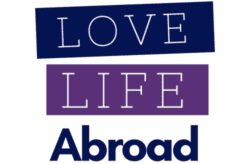Are you wondering when the best time to visit Banff to avoid the crowds? Most people will visit Banff National Park during its peak months, from June through September.
During these months, the park’s iconic and bright turquoise lakes are thawed, and the scenic roads and trails are accessible. Also, the weather is more enjoyable, and there is usually no snow (unless you are in very high altitudes, like on a mountain summit, which is very, very high).
But, several national parks, such as Banff National Park and Glacier National Park, are extremely crowded during summer. And not everyone enjoys walking at a snail’s speed through crowded sidewalks or trails or having many people photo-bombing their Lake Louise picture.
I don’t!
Another thing to consider is that Lake Moraine, a UNESCO World Heritage Site, is open only for a few months, generally from early June through mid-October. During winter, the road to Lake Moraine is closed due to avalanche risks. The only ways to see this iconic lake are:
- Bike when there is no snow,
- Snowshoe or cross-country ski on Lake Moraine Road. It’s around 24 km out and back with 820 m of elevation gain. You can safely cross-country ski or snowshoe up to the Consolation Lakes and Bow Valley viewpoint at about 9 km.
But, if July and August are off the table for a visit to Banff without the crowds, when is it best to visit?
In the article, I’m giving you a month-to-month highlight of Banff to help you decide when to visit. I’m also giving you my favorite month to visit, both for the limited crowds and the amazing things to do.
Disclaimer: Just a heads up, this free article contains affiliate links. If you purchase after clicking one of these links, I may earn a small commission at no additional cost. Also, as an Amazon Associate, I earn from qualifying purchases. Your support helps me continue to provide helpful and free content for you.

Best Time of Year to Visit Banff to Avoid the Crowds
Banff National Park is stunning anytime during the year. Here are some monthly vital points to help you decide what’s best for you and your family and to ensure you avoid the crowds.
That means we’re not recommending a visit to Banff in July and August. There is no way to avoid the crowds unless you go into the backcountry, and it’s a bit trickier with kids.
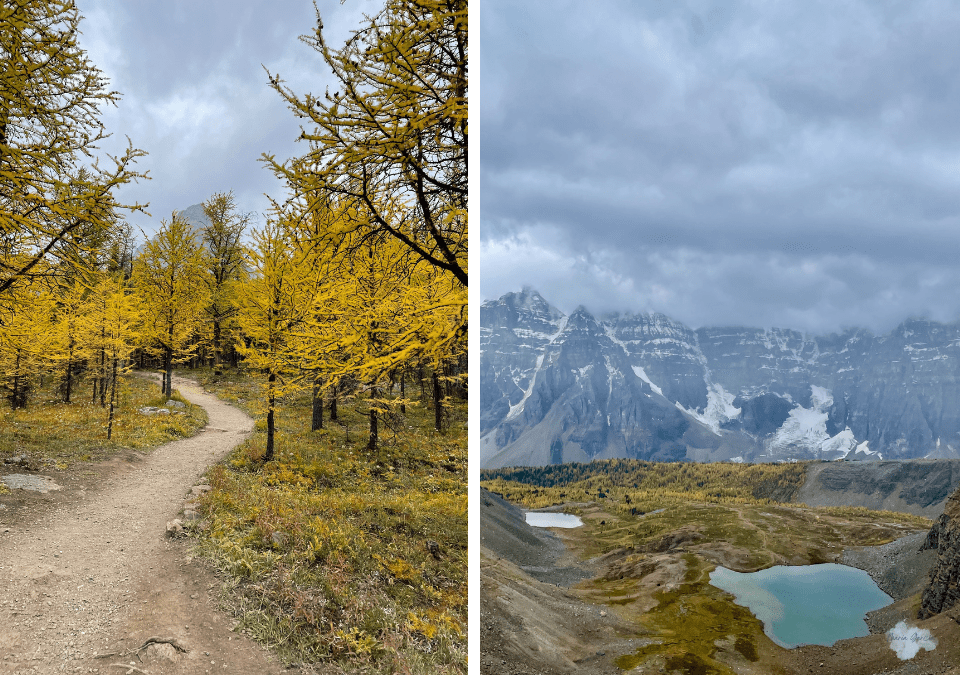
September
Banff is less crowded and has slightly cooler weather, not winter-like cold. So, like the best of both worlds (less crowds and less heat!).
During this month, the well-known larches start turning yellow, and people visit several locations, like Larch Valley in Lake Moraine, to get their dose of golden. However, this shoulder period also means limited or restricted activities or closed trails.
For example, to promote its cycling experience project, the Bow Valley Parkway closes 17 km on its eastern end to vehicles from September 1st to October 2nd. You can still access Johnston Canyon, don’t worry!
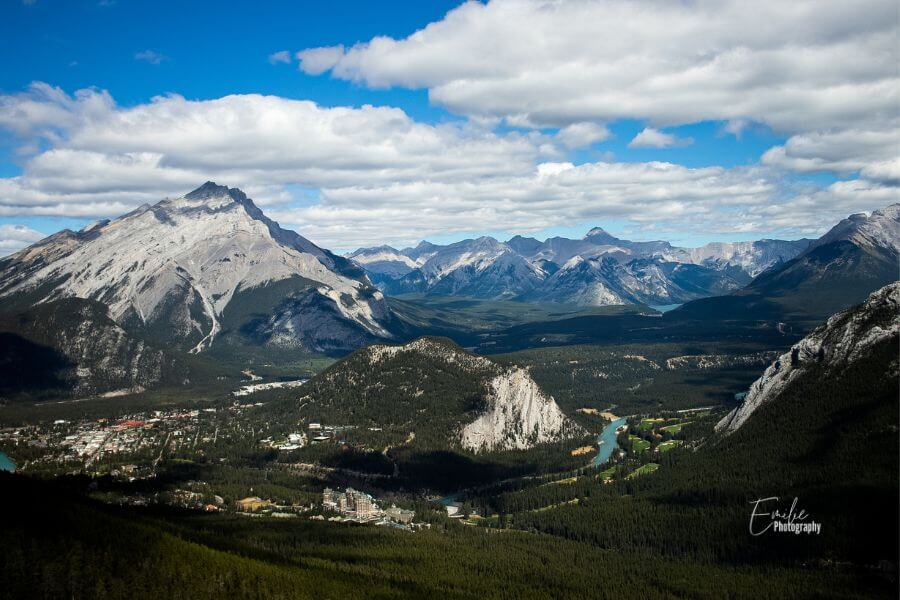
October
It’s pumpkin spice season, or sweater weather, however you wish to call it, in Banff. The temperatures drop even more as we transition from fall to winter. You still get to see some hints of yellow larches as the trees begin to drop their needles.
Ride the Banff Gondola or hike up to Johnston Canyon, as crowds are less observable.
You may need to wear layers as temperatures range from 3 °C to -6 °C. Some roads, like Lake Moraine Road, close for the season, and the lake can no longer be accessed unless you bike, cross-country ski, or snowshoe the distance (roughly 24 km out and back).
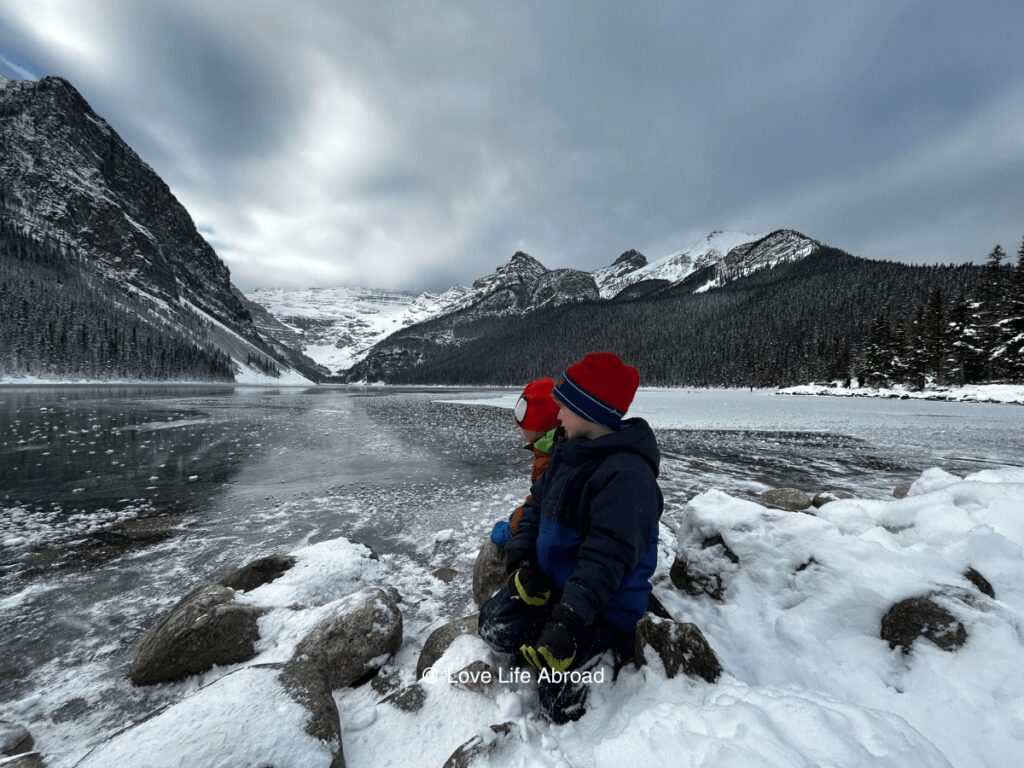
November
Known as one of the quietest months, Banff slowly transforms into a winter wonderland, preparing for the ski and ice skating season. Most accommodations offer more affordable rates than during the summer, making this a more budget-friendly period for families to visit.
The frosty weather ambiance with frozen lakes and waterfalls and the promise of a hot chocolate or coffee is enticing. However, if frozen is not your thing (and I’m not talking about the movie here lol), maybe the winter months are not for you.
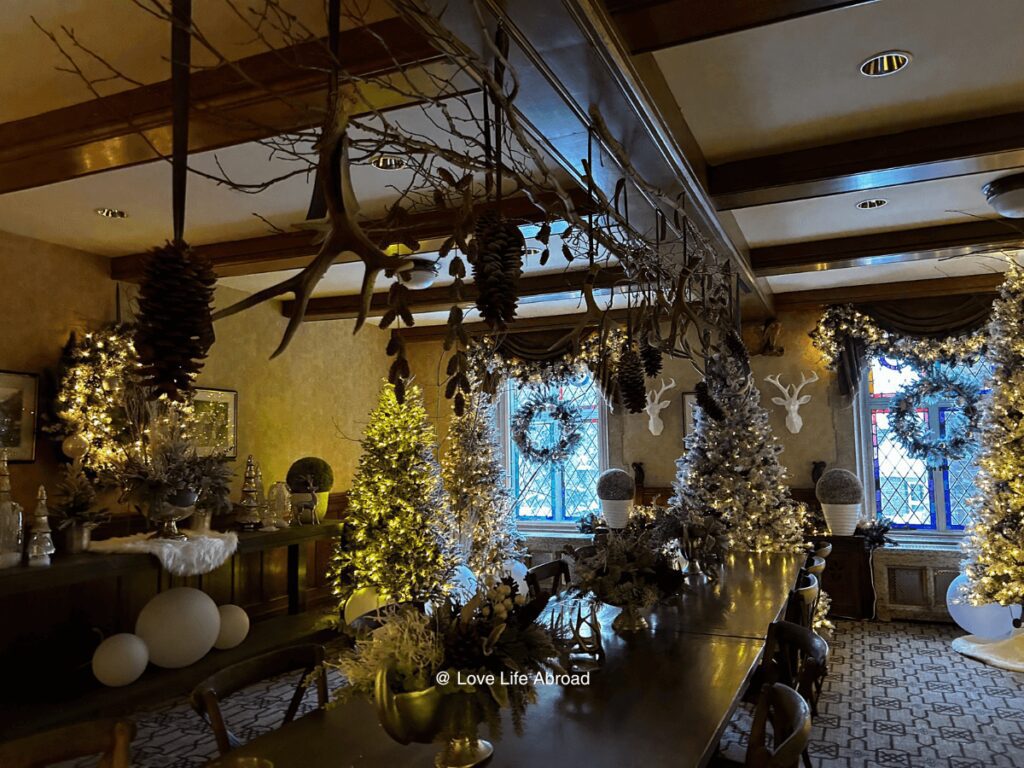
December
This is the month when you can expect a lot of snow and full winter conditions in Banff National Park. The days are shorter, with the sun rising at around 8:25 am and setting at around 4:38 pm.
The winter sports season is in full swing and blooming. You can expect large crowds in the ski resorts on weekends when most families have time off. If you prefer a calmer experience, try skiing or snowboarding during the week.
This, however, is a beautiful time to stay at a hotel in Downtown Banff and soak in the hot springs. It’s such a contrast between hot and cold!
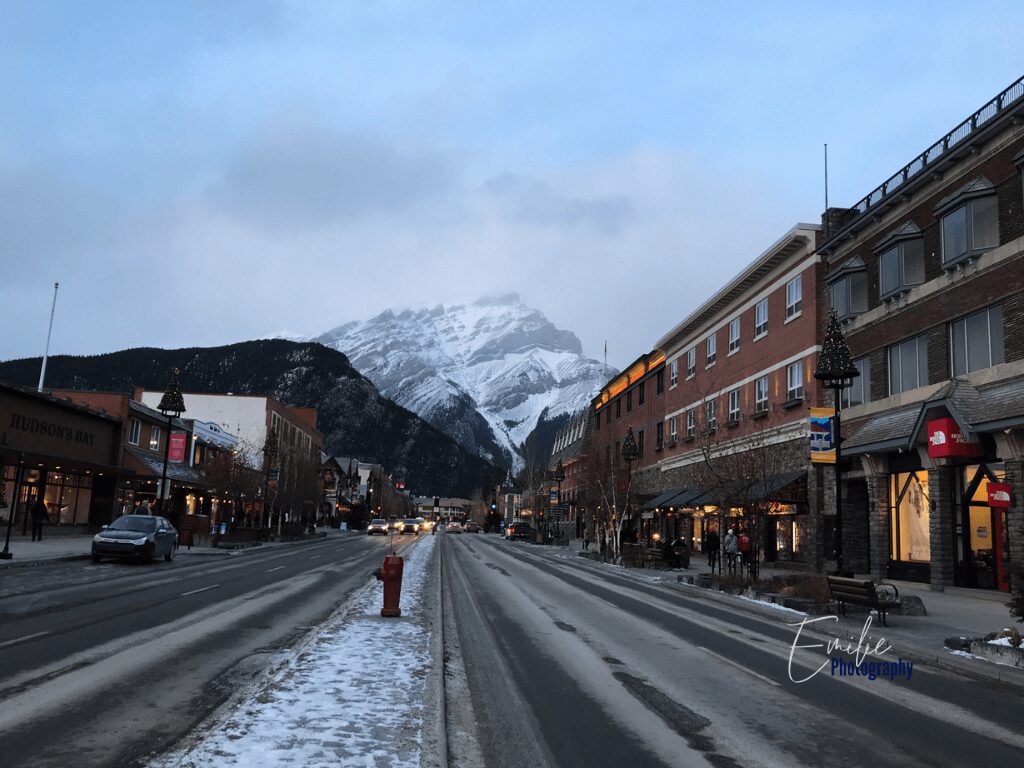
January, February, and March
During these three months, the weather is cold, and the mountains are almost entirely covered with snow. If winter sports are your thing, these are some of the most perfect months to practice some outdoor activities. You can find beautiful winter hikes.
Also, the days are getting longer, and in March, the sun rises at around 7:25 am and sets at around 6:24 pm, which allows you to enjoy slightly warmer days and “sunbathe” on the snow. This is an actual thing, though, known as windburn, which you know as sunburn, but in wintertime.
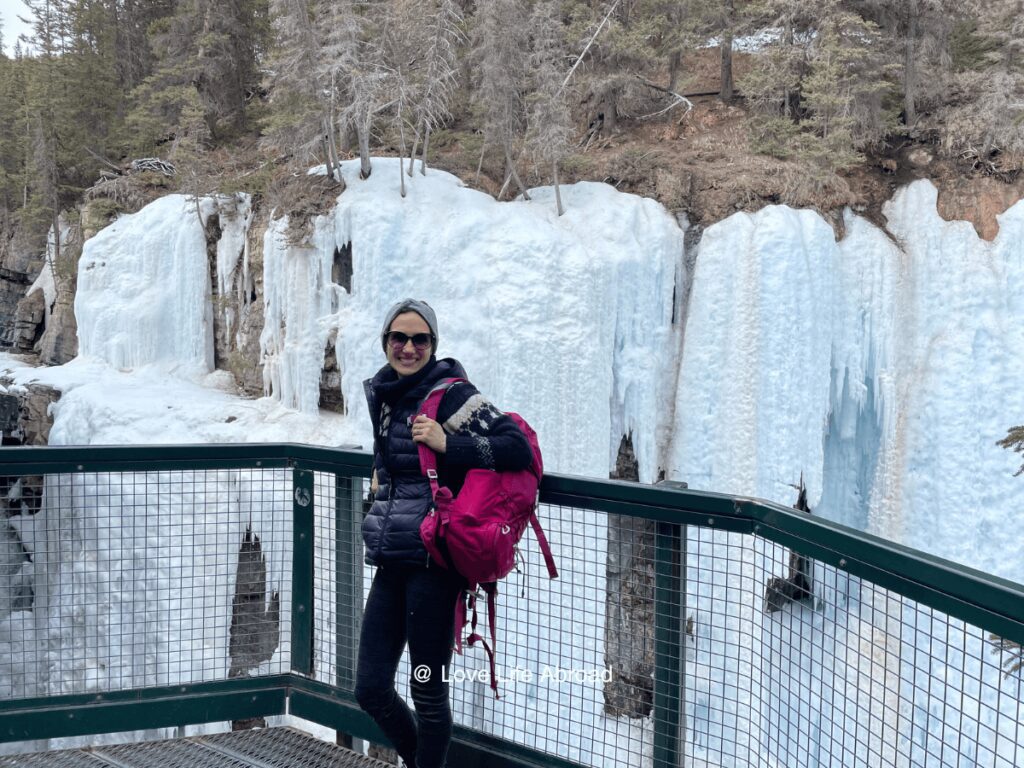
April
As spring peeks through the snowy mountain’s window, Banff’s ski season is still on but with more tolerable temperatures anywhere from -6 °C to 12 °C.
The snow is slushy-like in lower altitudes, and after living at -30 °C, it feels like summer!
You can still enjoy skiing, snowboarding, winter hiking, snowshoeing, and cross-country skiing in certain areas where the snow is still present.
May
Some ski resorts like Sunshine Village and Lake Louise Ski Resort remain open for a few more weeks as there’s still snow in higher altitudes.
Lower altitudes benefit from warmer weather, and lakes begin to thaw, which gives you a taste of the majestic turquoise-colored waters that attract visitors to Banff National Park.
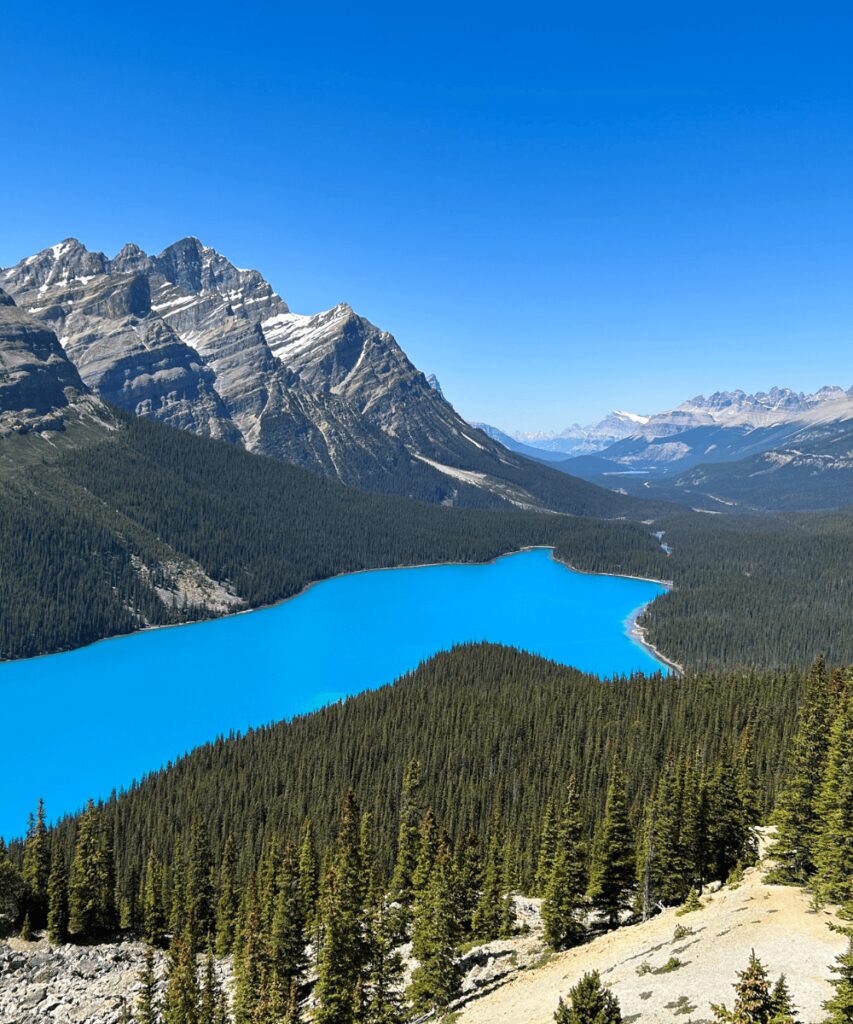
June
As the snow is gone and the temperatures keep rising, June feels more like summer during the day. Although it gets chilly at night, it is nothing crazy or intolerable. You can also expect to have some rain.
Lake Moraine Road reopens typically in June. Depending on how much snow is in this area, it can be anywhere from early June to mid-June to even late June.
Therefore, you can expect to see slightly more people.
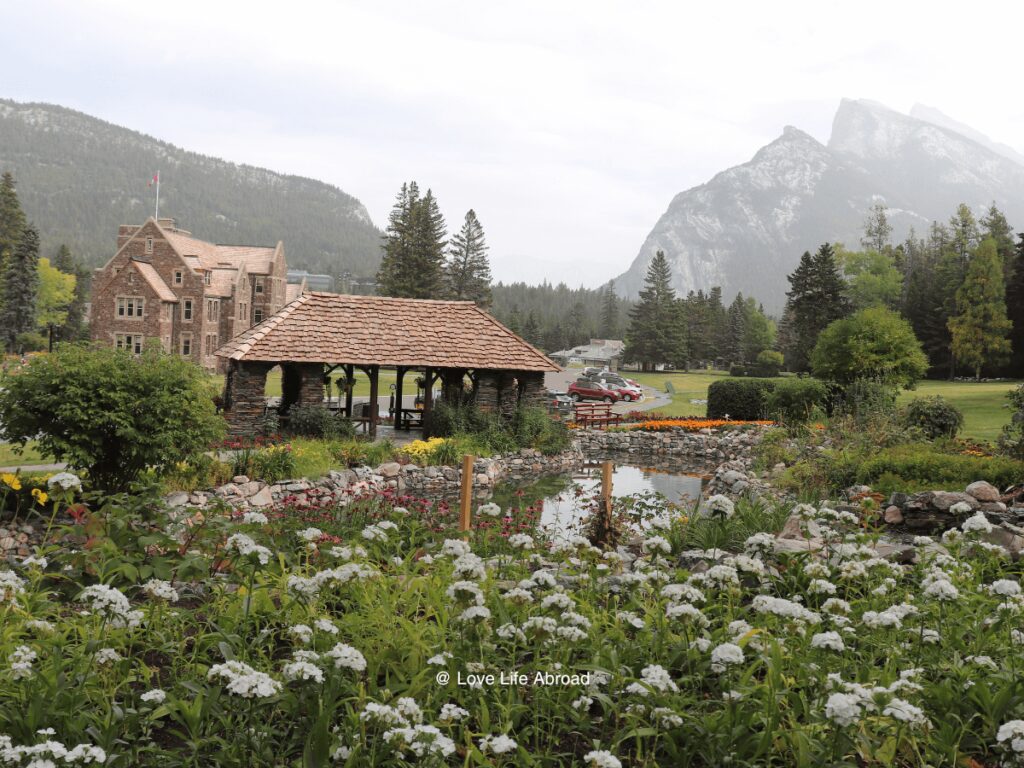
What to Expect in Banff at Every Season
Here’s a more detailed breakdown of what to expect during different times of the year
Late Spring (May to Early June)
The weather starts to warm up, but there’s still a chance of snow in higher elevations. Some trails might be closed due to snow or mud. However, the park is less crowded, and you can witness the beauty of spring blossoms.
For example, we visited Jasper National Park with my family in early June 2023. We had the best weather. It was around 25°C. We hiked, and we enjoyed the water at Lake Annette. We even paddleboarded, and the kids went in the water. The week after, Jasper received at least one foot of snow.
So, it’s worth considering that the weather is unpredictable during these months.
Summer (Late June to Early September)
The weather is sunny and warm, with daytime temperatures ranging from 50°F to 77°F (10°C to 25°C). This is the perfect time to explore Lake Louise, Moraine Lake, and the Icefields Parkway.
However, this is also the busiest season, so booking accommodations and activities in advance is recommended.
Early Fall (Mid-September to Early October)
The fall foliage in Banff National Park is a sight to behold. The larch trees begin to turn a golden yellow, especially in areas like Larch Valley in Lake Moraine and the other regions in Kananaskis Country. It’s the perfect time to go on a larch hike and marvel at the beauty of the Fall in the west of Canada.
Furthermore, temperatures start to drop, but the park offers a tranquil and picturesque ambiance. The road to Lake Moraine will still be open until Thanksgiving (mid-October).
Winter (November to April)
Banff transforms into a winter wonderland. With temperatures often below freezing, it’s a paradise for winter sports enthusiasts. Skiing and snowboarding at Sunshine Village, Lake Louise, and Mount Norquay are popular for locals and visitors.
Additionally, the frozen lakes offer unique experiences like ice skating and ice walking.
But it can be COLD. So you have to be prepared for the weather and dress yourself and your kids appropriately.

Final Thoughts: What is the Best Month to Visit Banff?
In my opinion, the best month to visit Banff National Park is September. The summer crowds have thinned out, and the fall colors are in full swing. Plus, most of the park’s attractions remain open and snow-free.
However, just like any national park, you must check Banff National Park’s official website for current conditions, road closures, and any alerts or advisories before planning your trip.
Emilie is the founder of Love Life Abroad. She helps moms plan epic road trips and outdoor adventures with their families. Because who said adventuring had to stop once we have kids? She’s based in the Canadian Rockies and shares her love for the region as well as other unique places in Canada & USA. She works with tourism boards and outdoor brands to inspire families to experience new unique destinations and outdoor activities.
